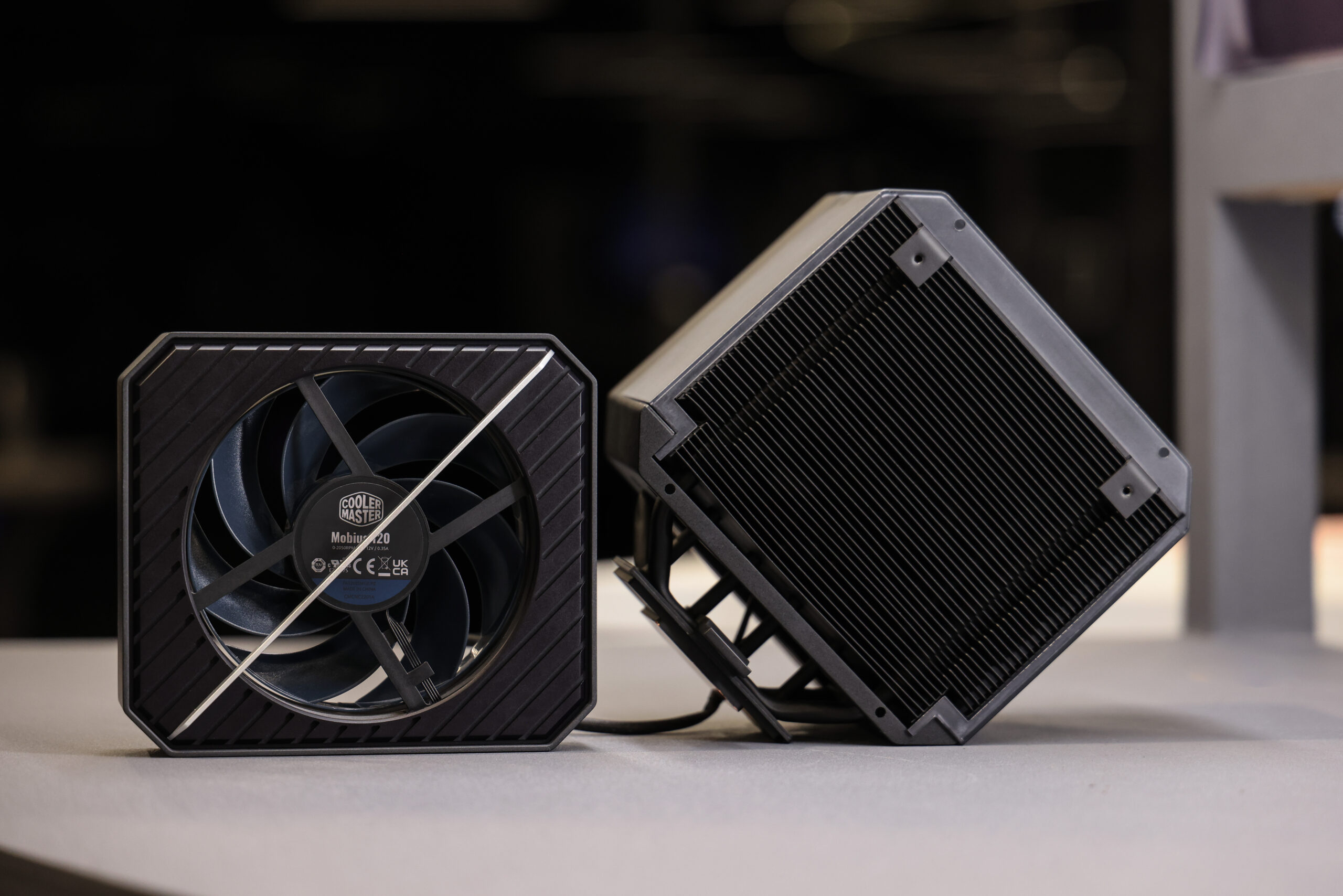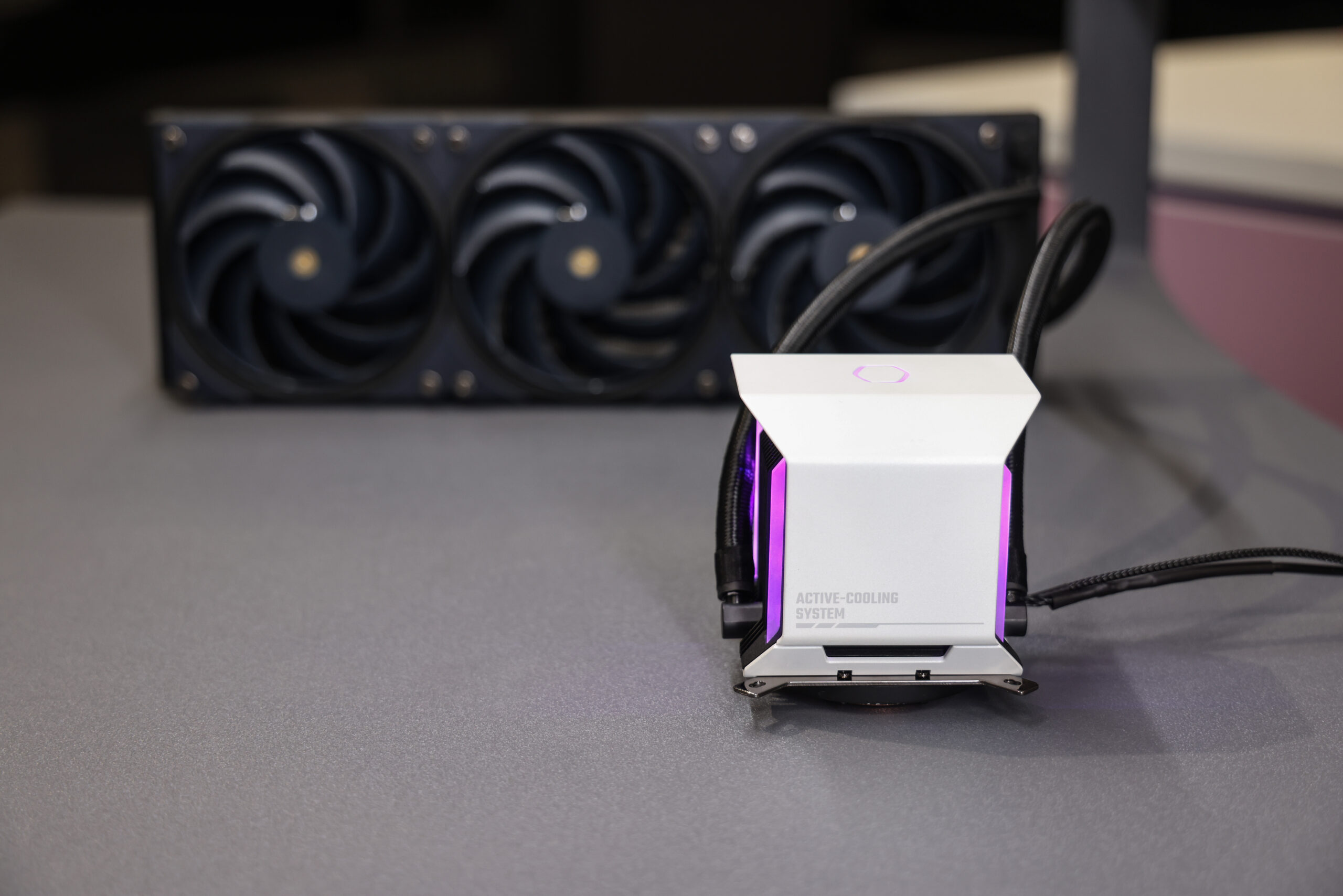Cooler Master's new AIO and air coolers can dissipate 300W of heat and beyond
Cooler Master is introducing an all-new air cooler and AIO liquid cooler, both sporting brand-new cooler designs.

Cooler Master has unveiled two new CPU coolers capable of dissipating 300W of heat or greater. The air cooler is the V8 3DVC, the successor to the V8 GTS, sporting a much more modern aesthetic and significantly more advanced heatpipe technology. The liquid cooler is known as the G11 AIO and features Cooler Master's latest dual-pump design, which reportedly increases cooling efficiency significantly. You can bet we'll be reviewing both units soon for a chance to compete for a position in our list of Best CPU Coolers of 2024.
The V8 3DVC is a completely new cooler from Cooler Master that is capable of handling CPU thermal loads of up to 300W. The vapor chamber has been completely redesigned to improve thermal efficiency. The heat pipes used in the V8 3DVC are Cooler Master's latest Superconductive Composite heat pipe technology, which reportedly doubles the "q-max" or the maximum heat transfer efficiency of the heat pipes.

Aesthetically, the V8 3DVC has received a massive makeover compared to its predecessor. The new model sports a significantly more mature matte black shroud covering the heatsink's top and sides. The V8 GTS that preceded it featured much more aggressive styling, with a triple-heatsink design mimicking a V8 engine block. Inside the V8 3DVC's heatsink are a pair of Mobius 120mm fans located at the front and rear of the heatsink.


Like its air-cooled counterpart, the G11 is an entirely new AIO cooler from Cooler Master, capable of dissipating CPU thermal loads beyond 300W. The heart of the new cooler is an all-new dual pump, a dual chamber design that reportedly increases pressure and heat dissipation efficiency. The interesting tidbit about this design is that every single component of the G11 is produced in-house with the assistance of AI. This could provide additional benefits and enable the G11 to stand out from most of its liquid-cooled contemporaries on the market, which are powered by Asetek pump designs.
The G11 also has a new aesthetic design that is not present on Cooler Master's outgoing AIOs. The pump assembly is much taller than your typical AIO, sporting a white shroud that covers the top and sides of the pump area. The right and left sections feature two RGB lighting strips per side, and there is a matte black heatsink in the middle that presumably helps cool the two pumps inside. The G11 will also come with special customization mounting options for users who want to customize their G11 with 3D printable parts.
The specific model Cooler Master showed off was a 360mm variant featuring three Cooler Master Mobius 120mm fans.
The full detailed specifications of each cooler have not been published, but we expect Cooler Master to make a full announcement of the new coolers at CES 2024 with more detailed specs.
Get Tom's Hardware's best news and in-depth reviews, straight to your inbox.

Aaron Klotz is a contributing writer for Tom’s Hardware, covering news related to computer hardware such as CPUs, and graphics cards.
-
hotaru251 holy crap that aio's block is massive...might as well just put a aircooler on it at that point <_<Reply
and i dislike the plastic covered aircoolers (personal dislike as i know some ppl like them)
and not a proper angle on the heatsink but it looks like might have issue with tall ram -
thestryker While I'm not a big fan of plastic around the fans so long as it is literally just plastic covering for a regular fan it's not a deal breaker. Really curious to see how the air cooler will perform when compared to the current top performers as we haven't seen anything of the sort in a long while. As hotaru251 said DRAM clearance seems like it would be an issue and there's no obvious offset method.Reply
The AIO sounds interesting, but I'm far more curious to see if it translates into actual performance. With it being so tall that seems like a missed opportunity to integrate a thin 60mm or 80mm fan for some socket/VRM/DRAM airflow. -
Albert.Thomas "You can bet we'll be reviewing both units soon for a chance to compete for a position in our list of Best CPU Coolers of 2024."Reply
Yes, that's true. I'll be visiting Cooler Master's exhibit at CES next week, hopefully they'll give me details about when I'll be getting the samples ;) -
CmdrShepard I am not getting what's new here -- Noctua NH-U14S DX4677 can already dissipate 700W so Cooler Master's 300W is a joke:Reply
dCACHpLzapcView: https://www.youtube.com/watch?v=dCACHpLzapc -
rluker5 My NH-D15 can barely hold 230w with my 13900kf in my typical closed case use, and while I don't need it for typical use, if this cooler can give me 50-70w more to play with it will be tempting as an upgrade option. That is a lot of watts for an air cooler and improved heatpipes sound like one of the few ways to improve performance. 230w is not even stock power limit for a 13900kf.Reply
If my common, high heatspreader G.Skill ram will still fit as hotaru251 first pointed out. If not then it is a dealbreaker.
And my case is closed and I'm already using Noctua fans, so the cheap look of the plastic cover is acceptable for me. -
bit_user Reply
Please ask if they would consider using 3D Vapor Chamber technology in a down-draft cooler.Albert.Thomas said:I'll be visiting Cooler Master's exhibit at CES next week, hopefully they'll give me details about when I'll be getting the samples ;)
I love the 3D vapor chamber concept, but I'm also partial to downdraft/updraft coolers. Just bought a Noctua NH-C14S, in fact, plus a 150 mm fan for it.
https://noctua.at/en/products/cpu-cooler-retail/nh-c14s -
bit_user Reply
From the product page:CmdrShepard said:I am not getting what's new here -- Noctua NH-U14S DX4677 can already dissipate 700W so Cooler Master's 300W is a joke:
"Please note that the NH-U14S DX-4677 is a dedicated version for the Intel LGA4677 socket. Due to its customised larger base, it cannot be used on smaller sockets and is incompatible with Noctua’s mounting kits for these sockets."The dimensions of LGA 4677 CPUs is 77.5 mm x 56.5 mm = ~4379 mm^2.
The dimensions of LGA 1700 CPUs is 37.5 mm x 45.0 mm = ~1688 mm^2.
That's a ratio of 2.59:1. Don't you suppose that so much additional surface area could transfer quite a bit of additional heat? In fact, I just computed the package area, but the ratio of contact area will be even greater!
That's misleading. He only shows it dissipating 700 W for a few seconds - not sustained. And by the end of that time, the temperature is still rising at a decent rate.CmdrShepard said:dCACHpLzapcView: https://www.youtube.com/watch?v=dCACHpLzapc -
watzupken Reply
I think it is not a good comparison given that the Noctua cooler is upward of a decade old by now. 230W of cooling was plenty, until Intel's Comet and Rocket Lake that started this trend of absurd CPU power draw.rluker5 said:My NH-D15 can barely hold 230w with my 13900kf in my typical closed case use, and while I don't need it for typical use, if this cooler can give me 50-70w more to play with it will be tempting as an upgrade option. That is a lot of watts for an air cooler and improved heatpipes sound like one of the few ways to improve performance. 230w is not even stock power limit for a 13900kf.
If my common, high heatspreader G.Skill ram will still fit as hotaru251 first pointed out. If not then it is a dealbreaker.
And my case is closed and I'm already using Noctua fans, so the cheap look of the plastic cover is acceptable for me.
While I do like some of Cooler Master's cooling solution, I am very reluctant to buy them because the after sales support is very limited, i.e. they have a habit of stopping support of newer sockets too early. Like I was quite keen to try out the V8 GTS 3 years ago, but failed to find even official support for socket AM4. Given the price of the cooler, quite disappointing to see them not provide longer socket support. -
rluker5 Reply
I think it is a good comparison because it is fairly common. The D15 is common enough that it has been on a lot of cooler benchmark charts. It isn't the best but it usually isn't too far off. Also CPU is from a common family of similar chips that also have their owners on the lookout for better cooling. Lots of people have unlocked Alder and Raptor Lake chips and while there are differences, they cool fairly similarly per watt.watzupken said:I think it is not a good comparison given that the Noctua cooler is upward of a decade old by now. 230W of cooling was plenty, until Intel's Comet and Rocket Lake that started this trend of absurd CPU power draw.
While I do like some of Cooler Master's cooling solution, I am very reluctant to buy them because the after sales support is very limited, i.e. they have a habit of stopping support of newer sockets too early. Like I was quite keen to try out the V8 GTS 3 years ago, but failed to find even official support for socket AM4. Given the price of the cooler, quite disappointing to see them not provide longer socket support.
I do like that Tom's has been testing coolers with both Ryzen and Intel chips. They are pretty different with where the hot silicon is, heat output and thermal density. Coolers are going to behave differently enough with each architecture that the watt/temp numbers aren't exchangeable and maybe some coolers perform better with an AM5 layout of hot silicon and some better with a LGA1700 layout. People with their respective CPU know better what to expect from a cooler if they see it tested with a CPU similar to theirs. -
BearRaid Reply
It's the space directly above the CPU. Why does it matter if it's taller? It's not like anything else needs to go in that space.hotaru251 said:holy crap that aio's block is massive...might as well just put a aircooler on it at that point <_<